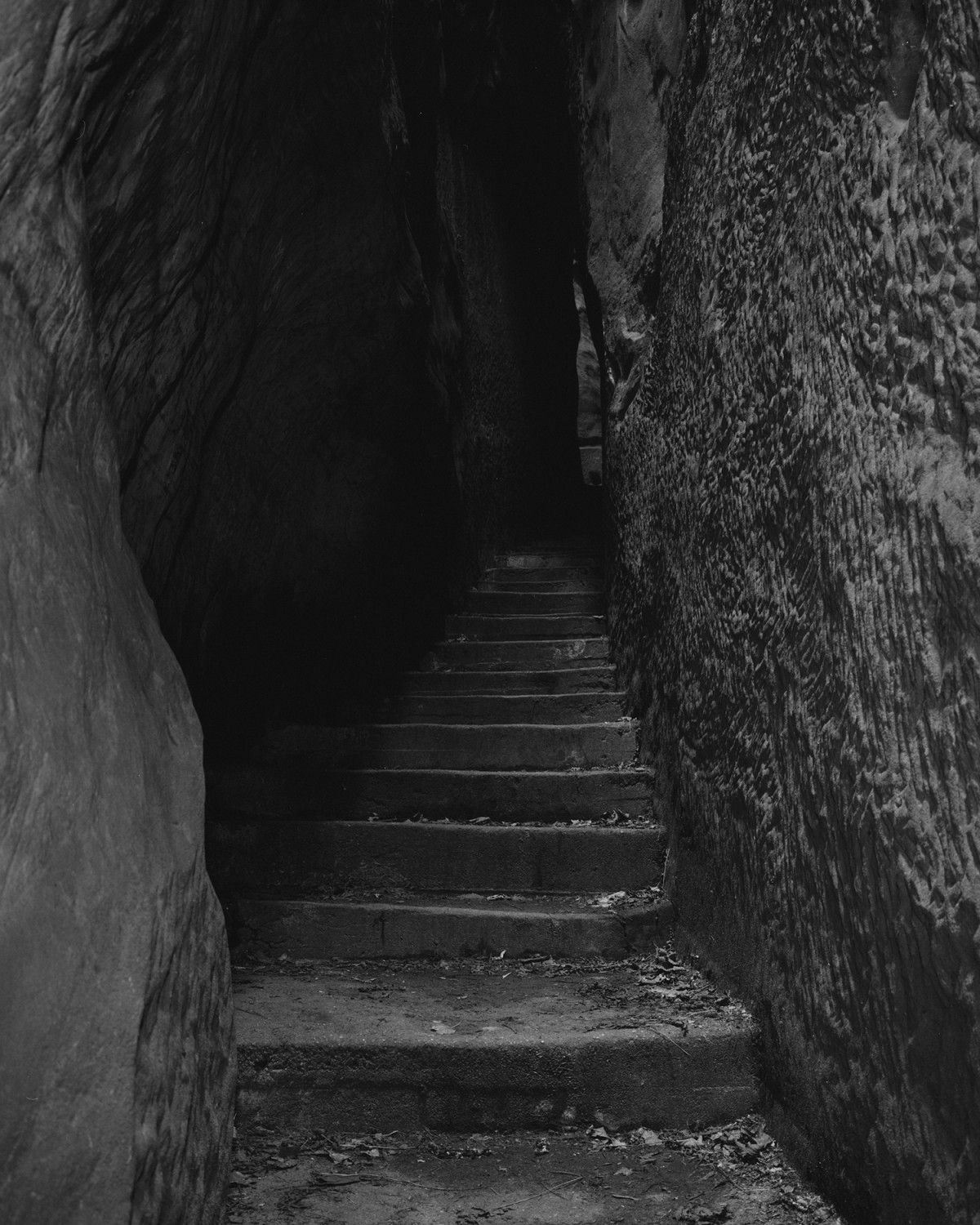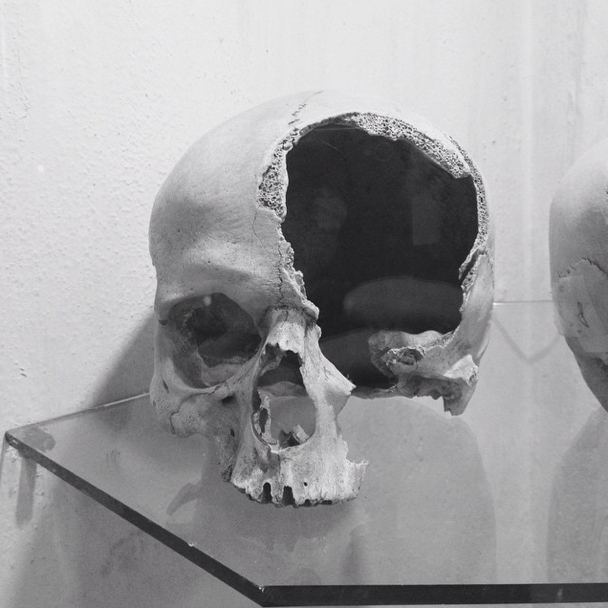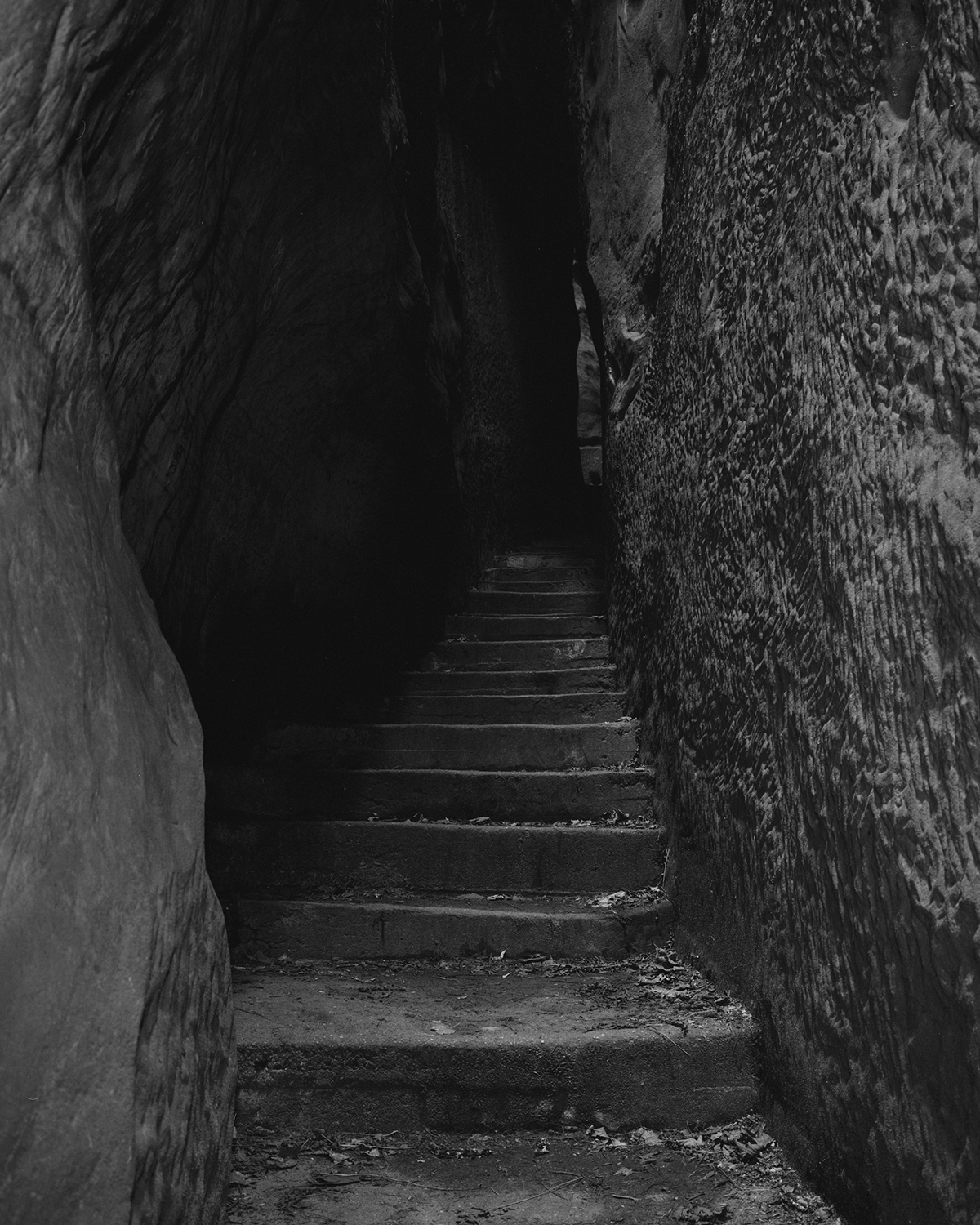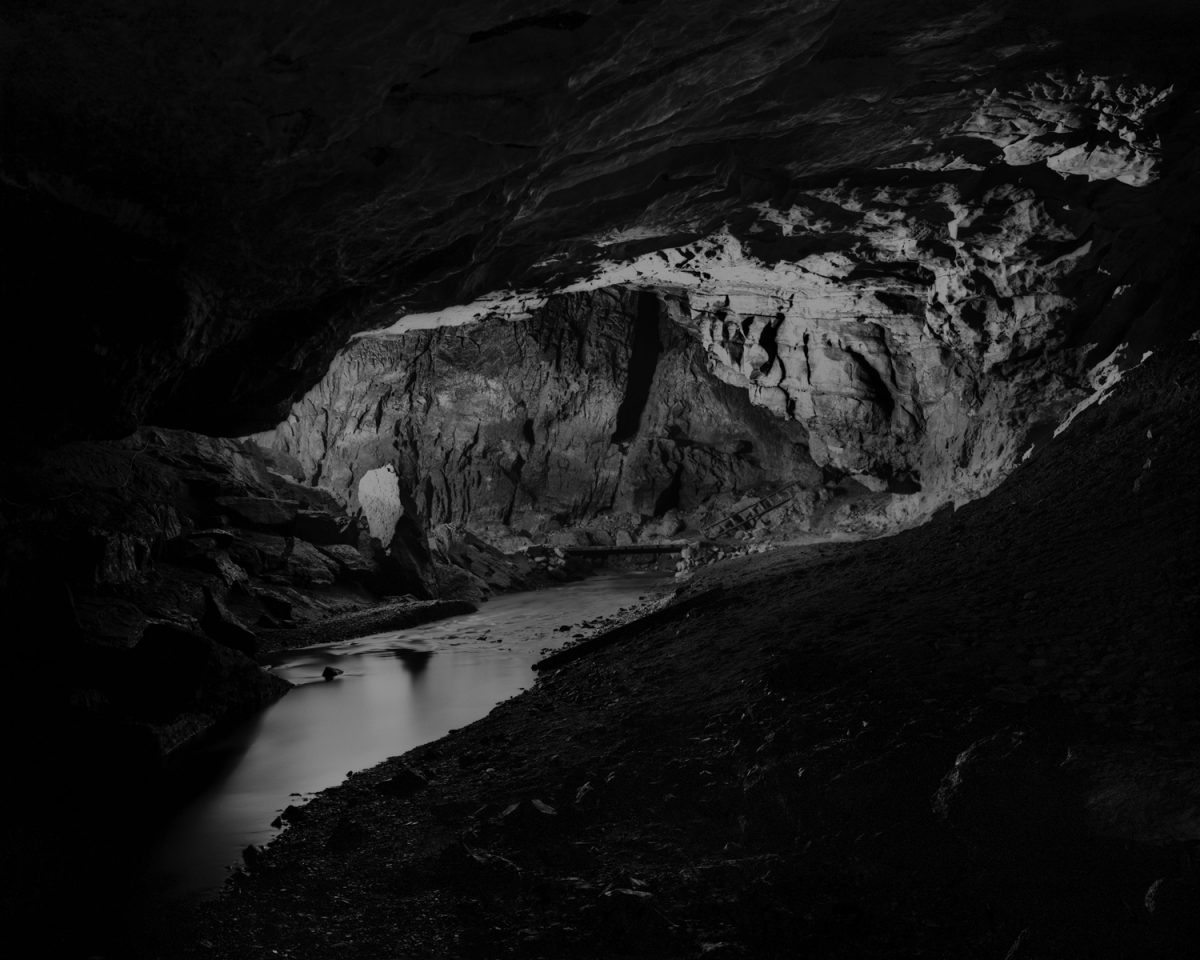A resource exploring approaches to capturing a ‘sense of place’ through photography, inspired by the work of Tereza Zelenkova.
Part of Jerwood/Photoworks Awards 1
Introduction
Tereza Zelenkova is interested in stories that link to her local landscape, and in portraying a sense of place, but rather than telling a specific story connected to her chosen place, she talks about capturing Genius Loci, which means the character or atmosphere of a place.
Tereza travelled to her native Czech Republic to explore history, local legend and folklore – stories that connect to particular places. The places she photographed ranged from castles, primeval forests, and ritual monuments, to folk architecture and sculptures carved into sandstone rocks.
I hope to create a portrayal of my home country that reflects its rich history, which I believe is imbued with elements of darkness and melancholy, occasionally seeping to the surface through dark fairytales, forgotten biographies, local histories and superstitions. There are many places and stories, which I think deserve to be documented, preserving something from their individual genius loci through photographs that not only describe and translate, but also enhance the poetics of a place.
Tereza Zelenkova
The eerily beautiful, black and white photographs of woodlands, stone structures and relics are described as dream-like, a coming together of subjective and subconscious associations. Whether by chance or intention, her personal relationship to the place also informs and inspires the images. Personal narrative and cultural myth are implied through the places, scenes and artefacts she photographs but the stories remain untold.
The locations I was particularly interested in were those with histories bordering with mysticism or in some way fulfilling my own personal image of what constitutes the mystery permeated landscape of my remembered childhood.
Tereza Zelenkova
I. Sensory Exploration
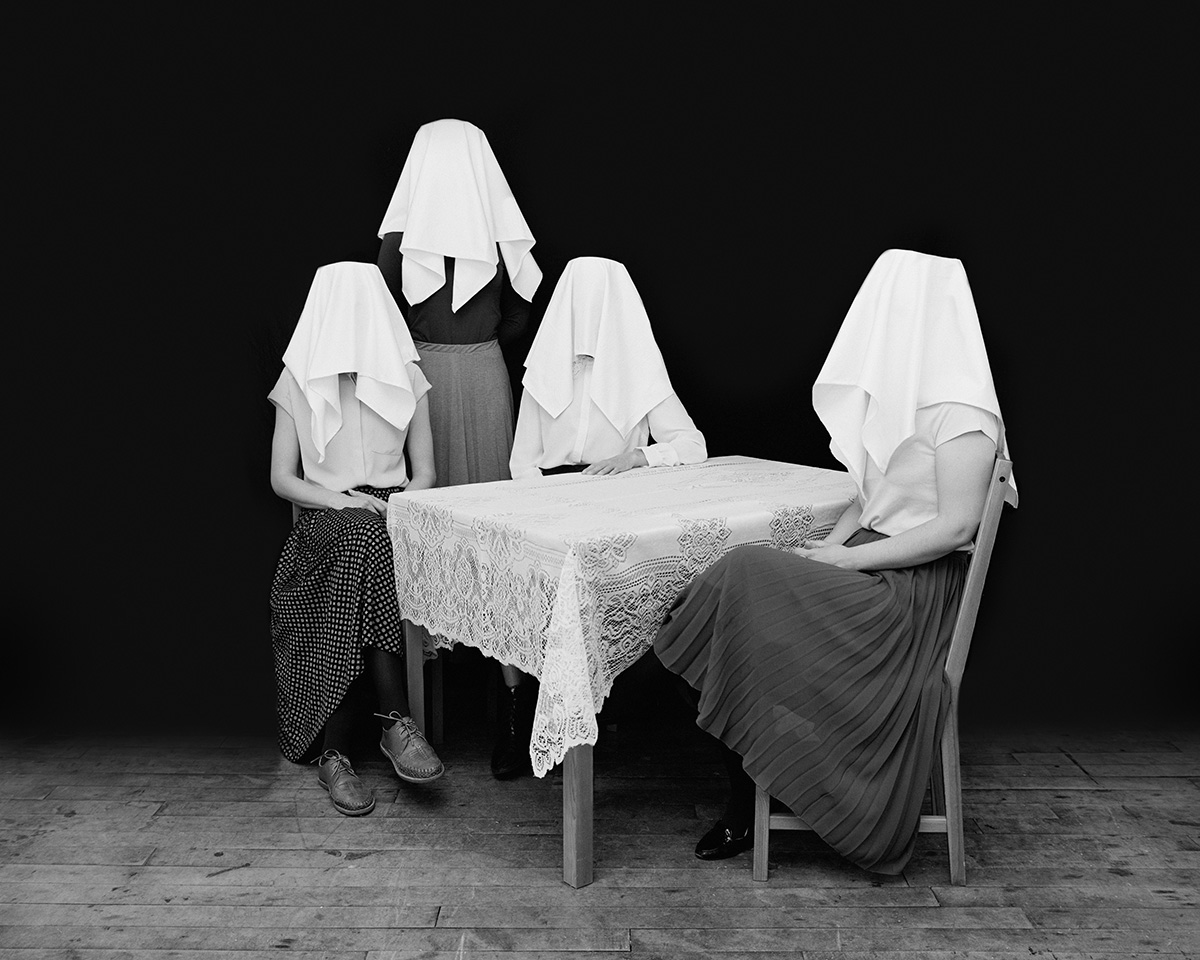
Try these discussion prompts:
Can a photograph capture more than the surface impression of a place? Can it capture something of its essence?
Imagine you can step inside the image space…
What can you hear?
What can you smell?
What can you feel (physically)?
What do you feel (emotionally)?
What in the photograph stimulates these responses?
What techniques or strategies has the photographer used to enhance the viewers sense of place?
Ask students to choose one photograph. Ask them to make a study of the image in their sketchbook and make notes in response to some of these questions:
What is happening in this photograph?
Where is the image taken?
Does the image remind you of anything?
How does it make you feel?
Could this photograph be interpreted differently by different people? How?
What is included in the photograph? What is missing?
Who is in the image? What does it tell us about them?
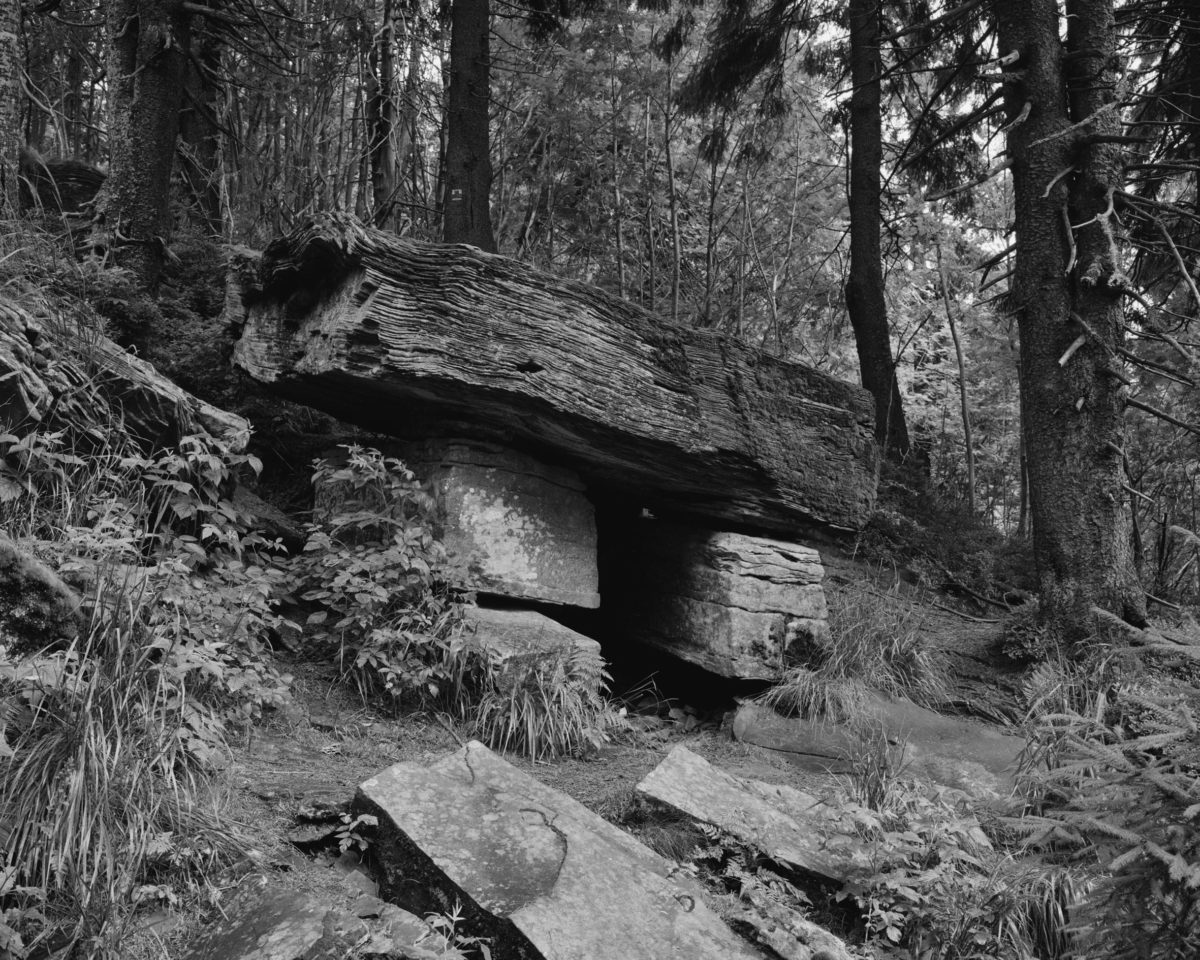
II. Photo-Treasure Hunt
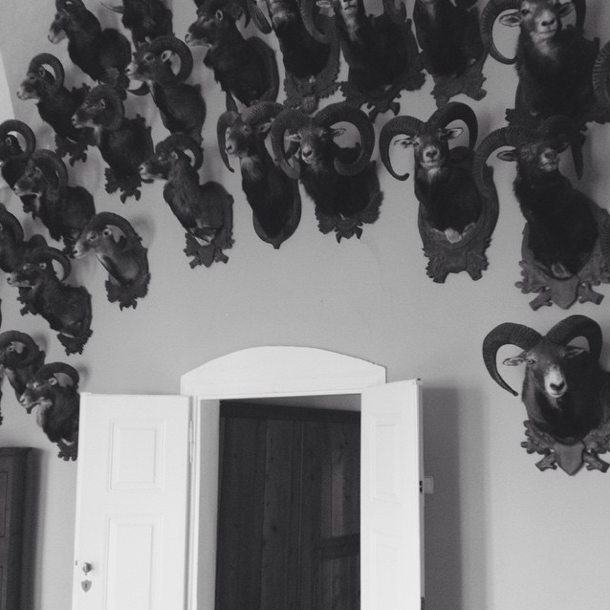
Generate a list of things to photograph within an allocated area. This could include colours, objects, shapes, textures or viewpoints. Set a time limit.
Review and discuss a selection of the resulting photographs.
What has it revealed about the place that had previously gone unnoticed?
III. Feelings In Photos
Generate a list of words describing emotions – happy, sad, angry, excited, etc.
Set a time limit and ask students to take pictures of people or objects that convey the different feelings.
Review and discuss a selection of the resulting photographs, guessing which emotion is being represented.

IV. Capture a Sense of Place
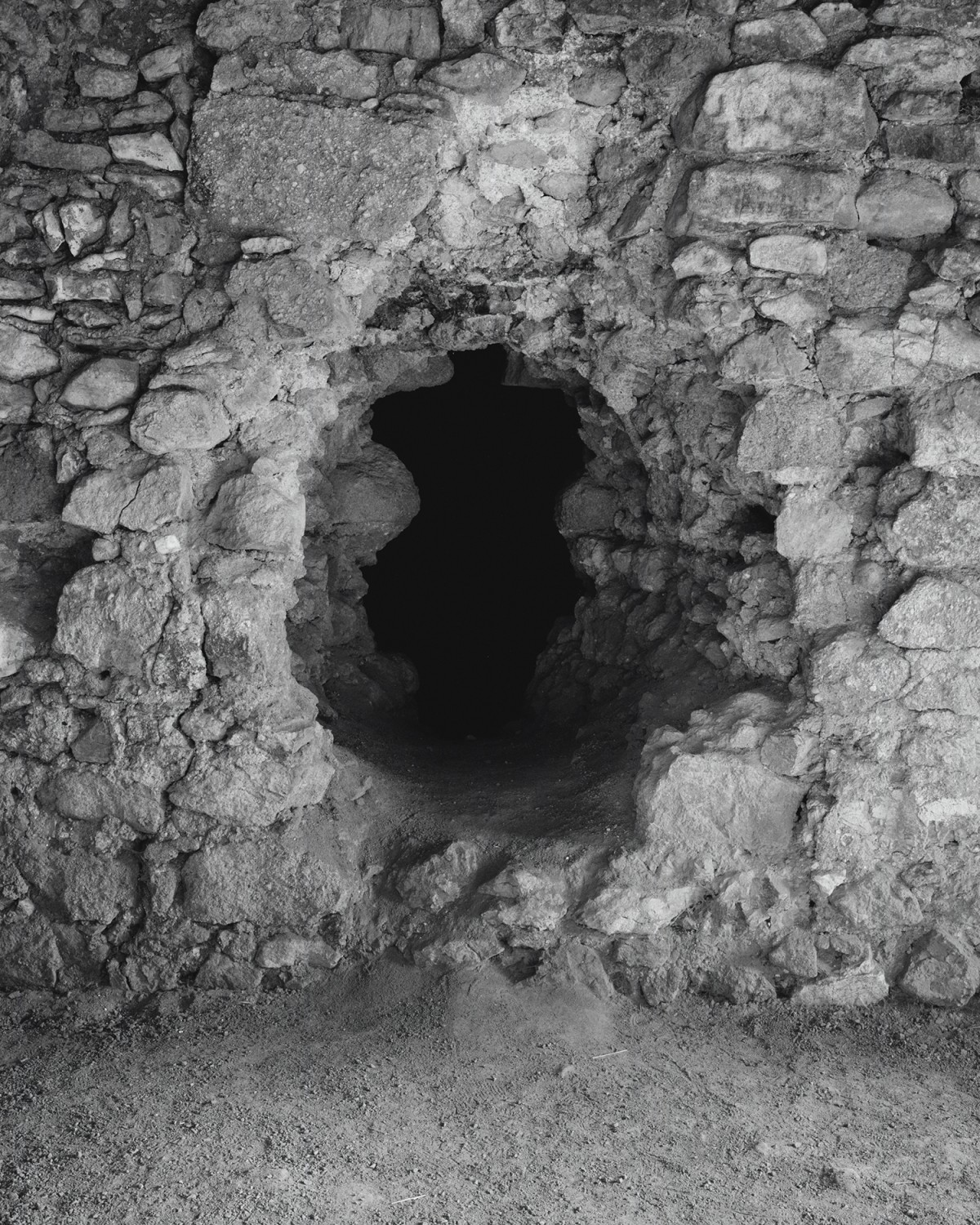
Study a map of the local area and work with students to identify sites of significance. Places could be linked to personal memories or encounters, local myths or gossip or historical facts or fiction. Use family albums and heirlooms, local media or a local history archive for inspiration.
Write a list of all the obvious and iconic things that could represent the local area – agree to not photograph any of these things! Instead, how could the more subtle or unexpected character of these places be captured in a photograph?
Are there objects or artefacts linked to the places or associated stories that you could use? What other images could be created to capture something of the stories or the place?
Encourage students to explore composition by using different angles of approach and both horizontal and portrait framing. Experiment with both colour and black & white. consider the impact this has on the images.
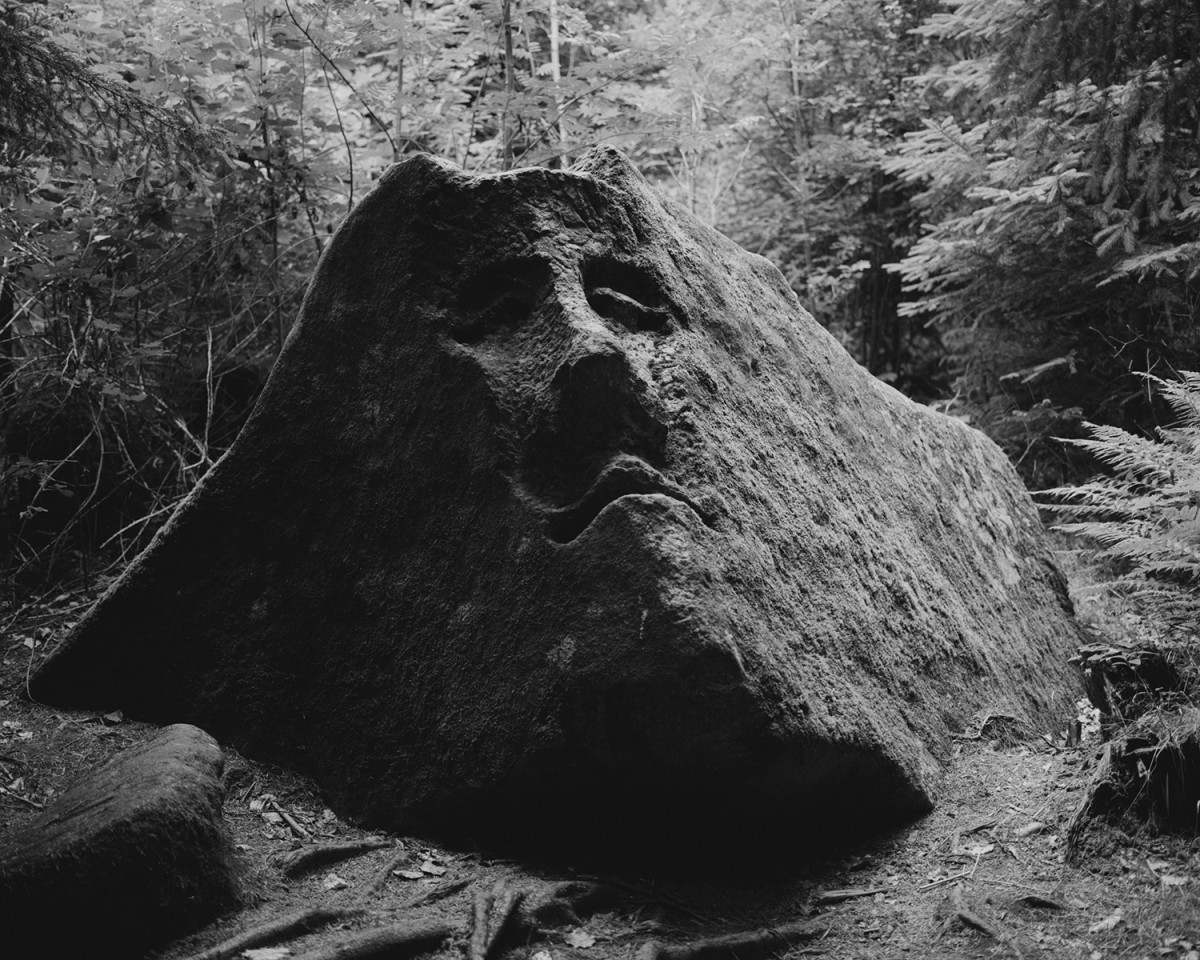
About the Contributor
Lindsey Smith is a Photographic Artist and Freelance Artist Facilitator. Over the last 25 years she has worked in collaboration with a range of organisations to design, deliver and evaluate learning and engagement initiatives.
She has extensive experience of devising and facilitating public workshops and creative projects. Employing a broad range of materials and processes within a photography and lens-based practice enables me to engage with a diverse range of audiences and participants.
